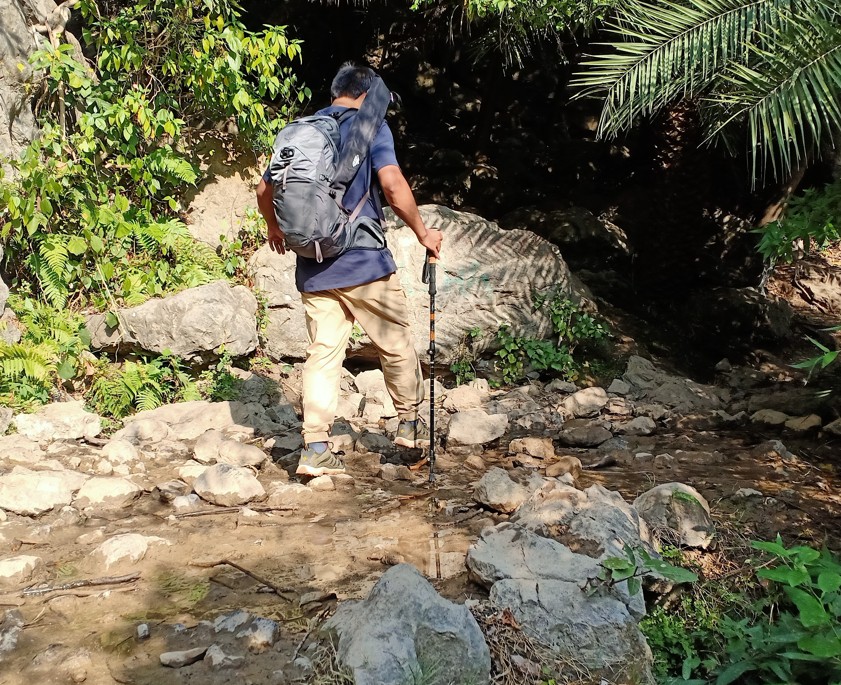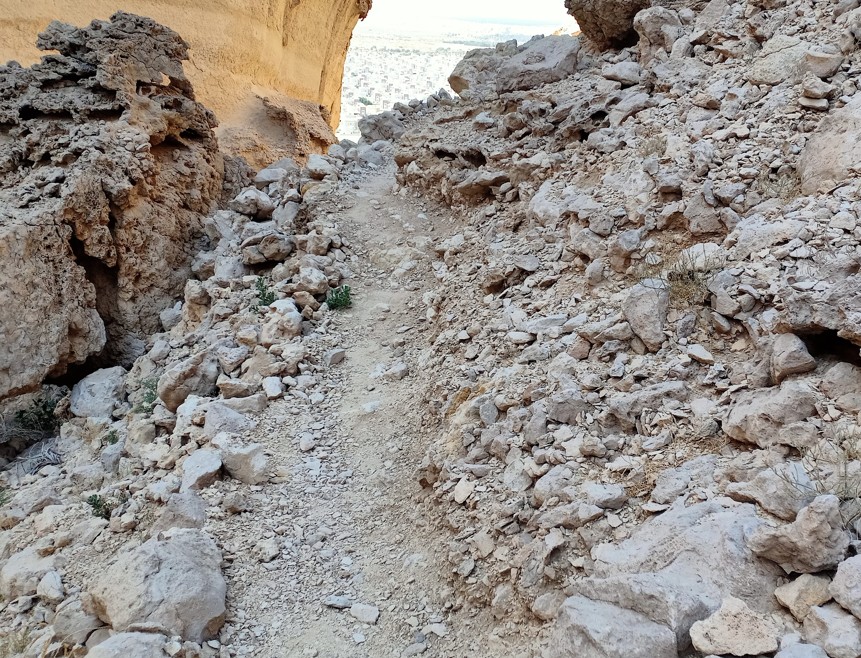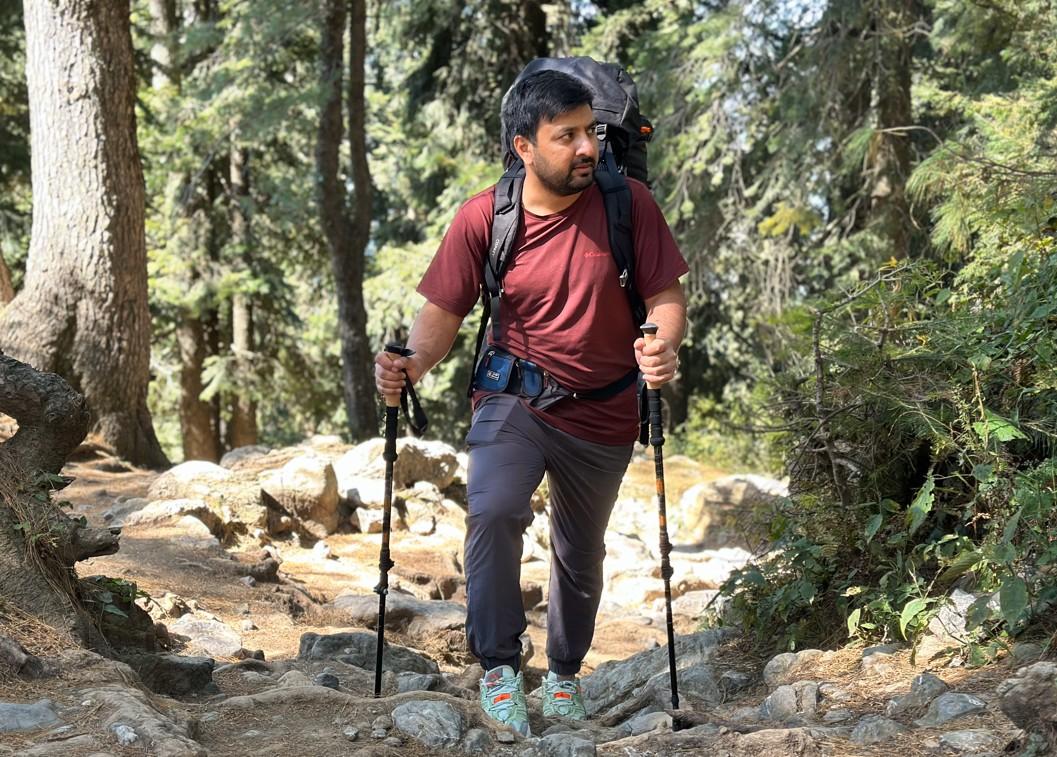Hiking can be dangerous, like any other outdoor activity, if you are unprepared and lack knowledge of hiking gear. Risks include loss, injuries, blisters, wildlife animals encounter, or unstable weather conditions. Hiking alone, especially for inexperienced individuals, increases these dangers due to the lack of outdoor gear and trail knowledge. Lack of trail markings or maps can also lead to confusion, which is common during unparalleled hiking adventures. However, these risks can be minimized if you plan hiking correctly and understand what gear you need and how you walk in the mountains.
Related: Is Hiking a Sport
Common Hiking Dangers
Slips, Trips and Falls
Slips, trips, and falls are some of the most common hazards people encounter on the trail. Accidents can happen because of the uneven terrain, muddy surfaces, and overgrown bushes. Slips can occur on wet surfaces such as stones and moss-covered ground.

You can also trip over the rocks and roots on the trail while hiking. A fall can take place as a result of slipping; it can cause a bruise, an injury, and sometimes even a fracture. To prevent such calamities, you always have to be vigilant out there and aware of your surroundings. Wearing comfortable and stable footwear can help reduce the accidents.
Wildlife Encounters
While hiking outdoors, encountering wildlife on a trail is very common. As a hiker, you must be aware that you may encounter predators such as bears, lions, wolves, or coyotes.. These animals usually avoid humans. But if you threaten them, they can definitely attack in defense.
It is crucial that you remain calm in such situations and avoid approaching the already startling animal. You should never attempt to feed wild animals, as this can provoke them to attack. Hikers should also watch their step if there is any chance of encountering venomous snakes.
Extreme Weather Conditions
Extreme weather conditions can be dangerous while hiking, especially in a mountainous or remote area. Sudden changes in weather, like heavy rainfall, snowstorms, extreme heat, and strong winds, can lead to severe dehydration, hypothermia, and disorientation.

The weather in the mountains changes very quickly and is unpredictable. The extreme cold conditions can lead to severe frostbites and other breathing problems.
Not checking the forecast and carrying appropriate gear make the situation worse. It is also of the utmost importance that you carry the essential things with you for your protection.
Getting Lost or Disoriented
You can get stranded on a trail for several reasons, including:
- Poor visibility
- Unmarked trails
- Dense forest
- Sudden changes in weather
- Lack of familiarity with the trail
The unmarked trail is one of the worst experiences I’ve had, as it can lead you in the wrong direction. Some trails split into multiple sub-trails without any signposts, which can confuse hikers.
I’ve encountered this dilemma many times. The worst part is when you’re deep in the mountains and darkness begins to approach—it can quickly turn into a nightmare.
Factors That Increase Hiking Risks
Inexperience and Lack of Preparation
Inexperience, which leads to a lack of preparation, is the most significant factor that increases the hiking risks. A person hiking for the first time might not be fully prepared or have packed accordingly for a hike.
A new hiker sometimes underestimates the hiking challenges and does not pack and prepare considering the trail difficulty level. I saw schools and university groups that came for the hike without any preparation.
Some inexperienced hikers poorly plan their hike, which includes route planning, time management, and missing important things like weather forecasts, track difficulty, and potential dangers.
Inadequate Gear
The lack of proper gear is another significant risk on a hike that can lead to serious consequences. Look around at other people when you are on the trail and their hiking gear.
Most of them just come for fun. Look at their footwear and backpack. I saw them hiking in their regular shoes with no tread pattern and falling on the train.
Without proper hiking footwear, you can cause severe damage to your feet on a hike, increasing the risk of blisters, frostbite, and soreness. I saw people on the trail not carrying enough water.
Hiking Alone
Hiking alone comes with its own set of risks. Although some people prefer hiking alone to enjoy solitude, it can be risky—if you get into trouble, suffer an injury, or get lost, there may be no one around to help you. Especially if you are not an experienced hiker, choosing to hike alone might not be a good idea.
Lack of Trail Markings or Maps
Lack of trail markings or maps can significantly increase the risk of getting lost while hiking. Without a clear trail sign, it is very easy to get lost and difficult to navigate your way around to choose the correct path. The absence of these things can lead to severe dehydration and exhaustion. It can also unnecessarily prolong your hike.
Tips for Safer Hiking
Plan Your Hike Carefully
Considering the terrain, duration, and weather conditions, having adequate gear and equipment is extremely important. It’s also helpful to double-check online sources and gather information from locals, especially in remote areas, to prepare for your hike.
It is always a smart choice to pack extra food, snacks, and enough water for the hike and have extra layers for the unpredictable weather.
Pack the Right Gear and Supplies
Packing the right gear is key to a successful hike. Wear weather-appropriate clothing and leave room to add and remove the layers according to the change in weather. Choose moisture-wicking base layers, insulated mid-layers, and a waterproof outer layer to stay comfortable and prepared.
Packing comfortable and sturdy shoes and socks is also very important for a hike. Other essential gear includes sufficient food, snacks, water, a first aid kit, a GPS or compass, portable chargers for your phone, flashlights, and hygiene supplies.
Packing safety gear like a small pocket knife for emergencies and extra batteries for flashlights, sunscreen, and glasses is also important.
Hike Within Your Abilities
Hiking within your abilities is extremely important to have a safe hike. You know your body well and its limitations. Access your physical health before embarking on a hike, and choose a trail that matches your capabilities.

Pushing yourself too hard on a hike can result in severe injuries, dehydration, and exhaustion. Always take an easy trail if you are unsure about your endurance level and stamina. Considering the weather conditions is also very important.
Always make sure the weather matches your physical abilities to endure the environmental conditions. It’s always a good idea to postpone your hike till the weather is more favorable to ensure your comfort and safety.
Hike With a Partner or a Group
Hiking with a partner or with a group of people is always a safer option should you get in any kind of emergency. It helps prevent disorientation and provides a sense of security especially hiking through a challenging trail. It minimizes the risk of getting lost and helps everyone stay aware of each other’s well-being throughout the hike.
Summary
Hiking can be dangerous if not properly planned, taking all factors into account. It’s important to consider factors such as weather, knowledge of the area, having a hiking partner, and proper gear. Hiking can also be a very enjoyable experience in nature if it’s planned properly to minimize the risks and prioritize safety.
Read More:
